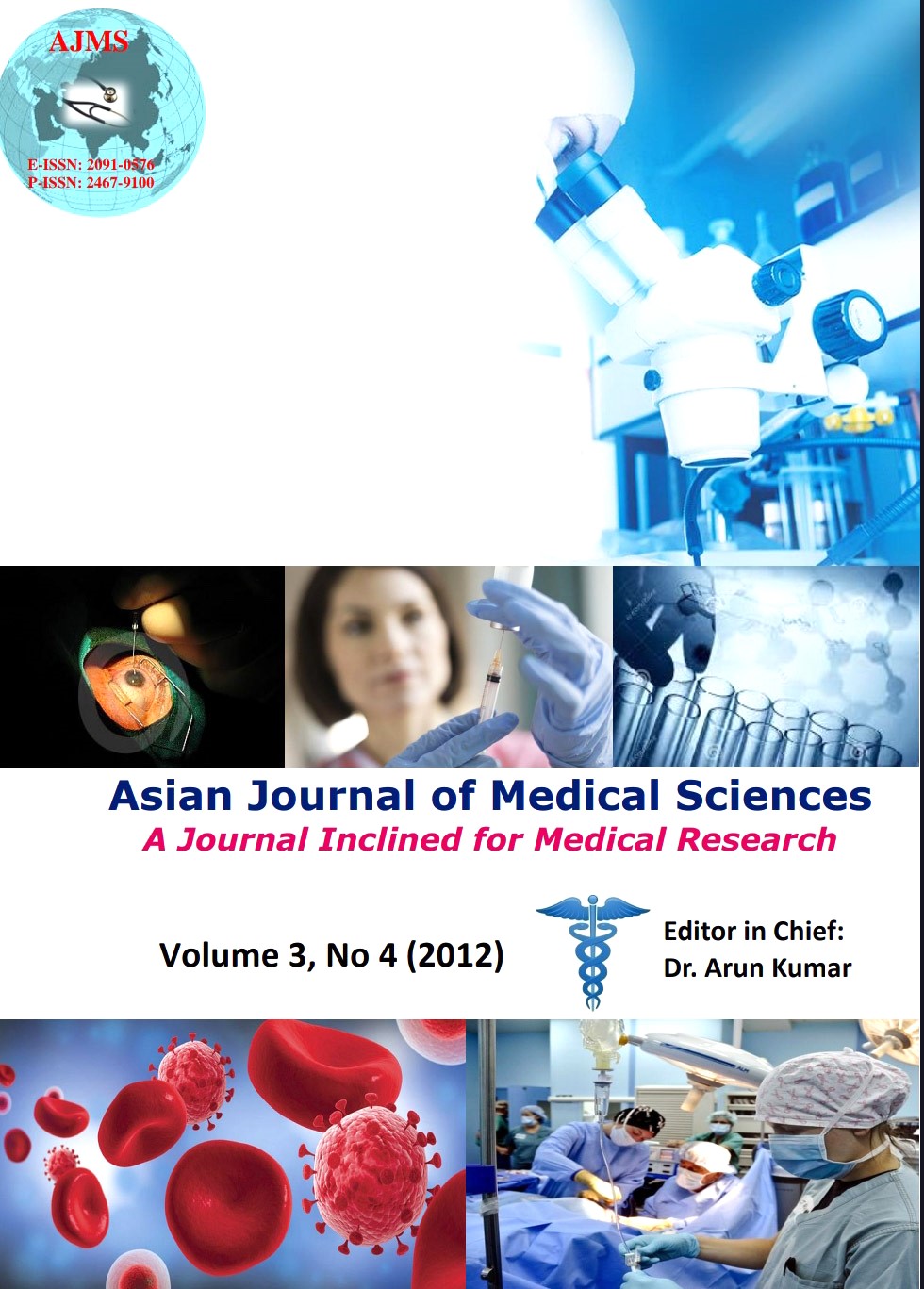Prevalence and Factors associated with Reproductive Tract Infections among Married Women of Reproductive Age in Kaski District, Nepal
Keywords:
RTI, Prevalence, Married Women, Associated Factors, KaskiAbstract
Objectives: Reproductive Tract Infections (RTIs) are common morbidities among women during reproductive age. These may lead to adverse health consequences including life threatening conditions. This study aims to identify prevalence and factors associated with RTIs among married women of reproductive age.
Methods: Cross sectional study was conducted in 7 randomly selected Primary Health Care Centres and Health Posts of Kaski district, Nepal. 282 participants attending in aforementioned health facilities were probed for RTI symptoms according to WHO syndromic case management guideline. Data were collected by using pretested semi-structured schedule and analyzed by SPSS (16.0 Version). Chi square, Fisher’s Exact Test, Odds ratio were calculated and P <0.05 was considered significant.
Results: Prevalence of RTI symptoms was estimated to be 78.9 percent. Common reported symptoms were backache (71%), low abdominal pain (67%), watery vaginal discharge (56%), genital itching (51%), burning urination (44%) and curdy discharge per vagina (26%). Most women with RTI were ?30 year’s age, ?19 year’s age at first pregnancy, had monthly income (NRs) <10000 and parity ?2, had sex during menstruation and did not clean genitalia after sex. Consistently, more than nine out of every ten illiterates, high parity (?4), having irregular menstrual cycle and abnormal bleeding had more RTIs as compared to their counterparts respectively. Illiterates, those who had sexual contacts during menstrual periods and those who do not clean genitalia after sexual act were significantly more at risk (OR=5.35,8.33 and 3.11) of having RTIs than those who do not had these attributes correspondingly. Illiterates, those who had sexual contacts during menstrual periods and those who do not clean genitalia after sexual act were significantly more at risk (OR=5.35,8.33 and 3.11) of having RTIs than those who do not had these attributes correspondingly.
Conclusions: Burden of the RTIs among women is unexpectedly high; indicating the women’s vulnerability to reproductive morbidities, limited service accessibility and their reproductive fates. Further, majority were modifiable factors; reflecting the needs of information and empowerment and behavior changes for the effective prevention and management of RTIs.
DOI: http://dx.doi.org/10.3126/ajms.v3i4.6066
Asian Journal of Medical Science Vol.3(4) 2012 pp1-7
Downloads
Downloads
Published
How to Cite
Issue
Section
License
Authors who publish with this journal agree to the following terms:
- The journal holds copyright and publishes the work under a Creative Commons CC-BY-NC license that permits use, distribution and reprduction in any medium, provided the original work is properly cited and is not used for commercial purposes. The journal should be recognised as the original publisher of this work.
- Authors are able to enter into separate, additional contractual arrangements for the non-exclusive distribution of the journal's published version of the work (e.g., post it to an institutional repository or publish it in a book), with an acknowledgement of its initial publication in this journal.
- Authors are permitted and encouraged to post their work online (e.g., in institutional repositories or on their website) prior to and during the submission process, as it can lead to productive exchanges, as well as earlier and greater citation of published work (See The Effect of Open Access).




